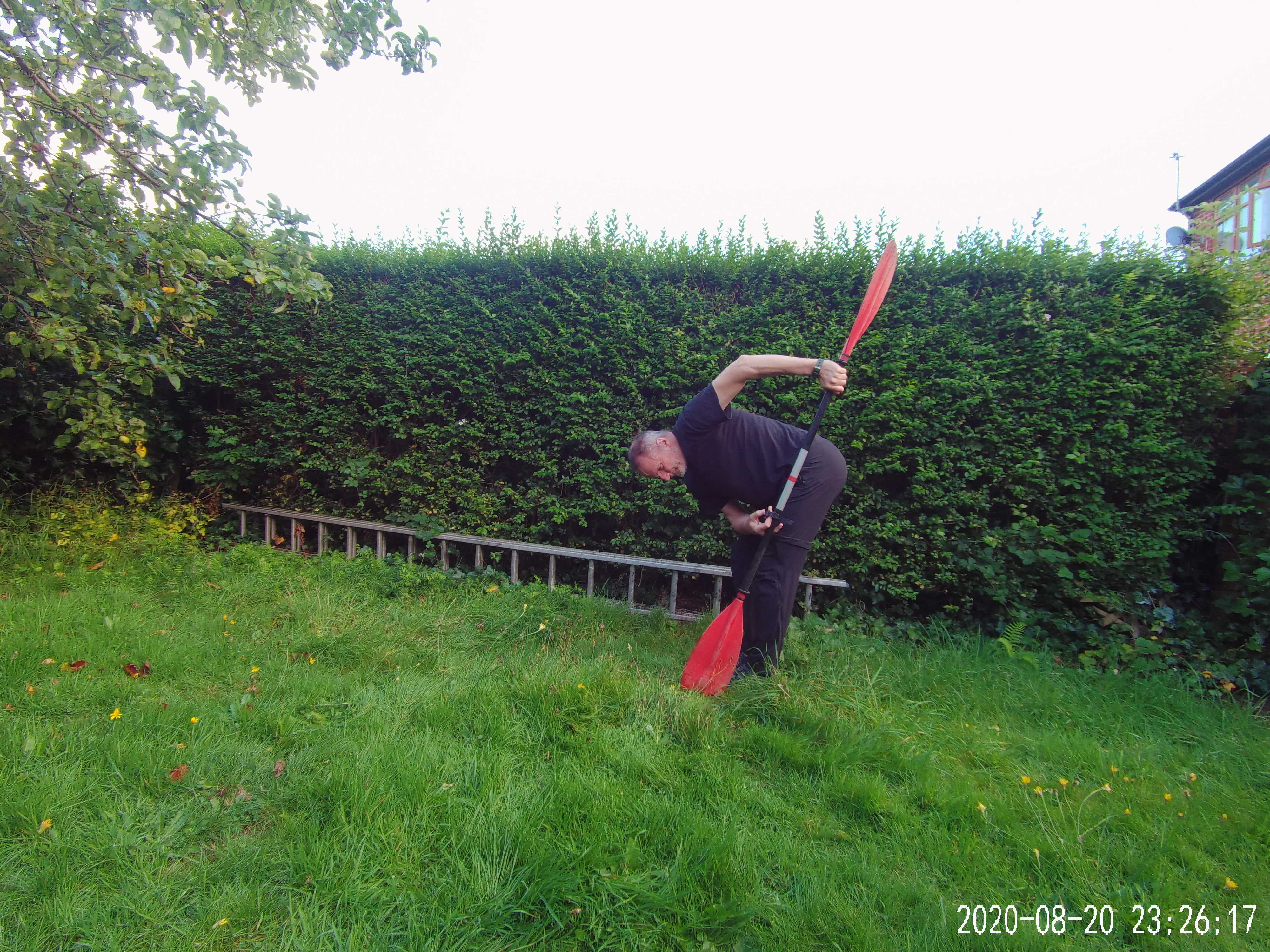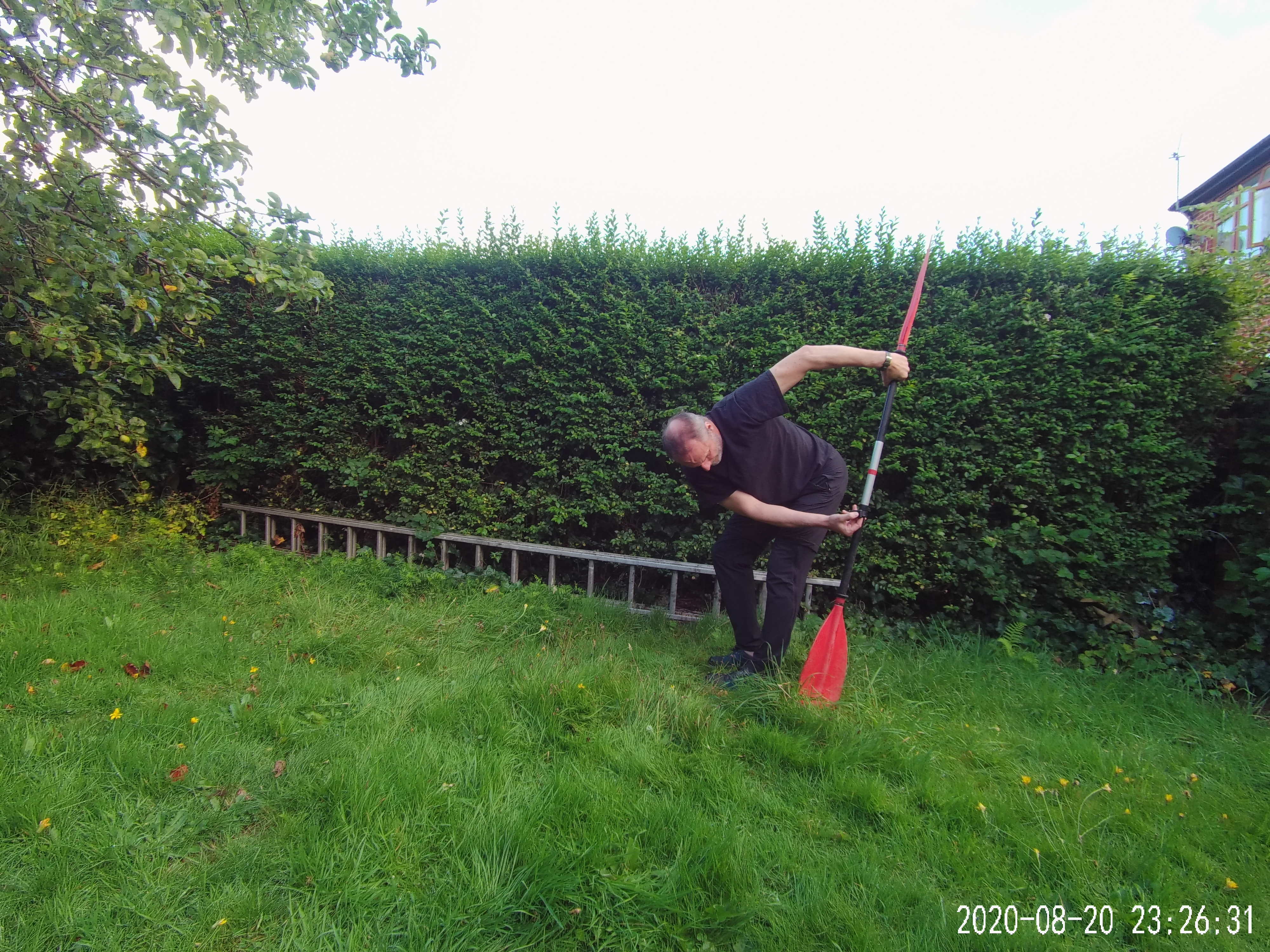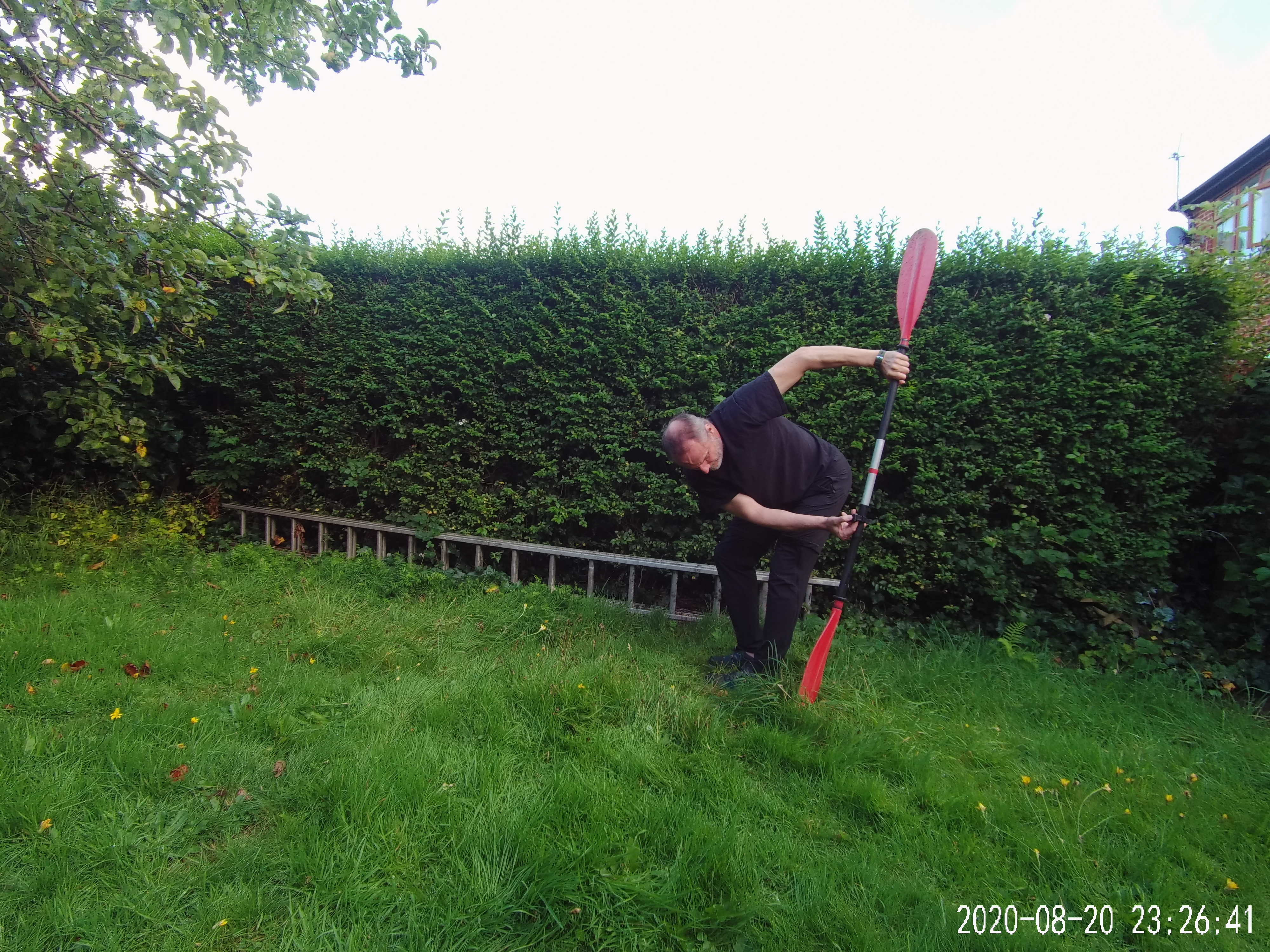Tel:
Email: chairperson@sheffieldcanoeclub.co.uk
Exercises and techniquies for paddlers
Exercises
The more supple you are, the easier you will find our exercises and techniques
Try to touch your toes
Whilst standing, try to touch your toes. This will help you with any type of roll. If you cannot touch them with straight legs, bend your legs. If you just touched your toes with bent legs, gently try to straighten your legs. The posture your are trying to achieve, is a lot like the setup position, but you have your feet on the floor and you are without a paddle.
Whilst in this position, imagine you are in your boat and your are capsized. Hold your breath. Pick up a paddle if you have one, and go to the setup position by pushing your paddle back behind you. When capsized this pushes the paddle up towards the surface of the water and prevents the paddle striking the boat during the sweep. How far can you push the paddle backward (to the sky if you are capsized)? The higher up in the water the paddle is, the more leverage you will have with it when you attempt the roll.
If you are a lapsed roller, now, try the roll, what happens? Paddles that dive too deep are often the cause of failed rolls.
Dry techniques for rolling
The obvious advantage of these dry techniques is that you can practice away from the river, and without the need for the luxury of clean water or any water or even a boat.
Let us look at rolling in detail
Whilst touching your toes, take a paddle and align it along your left leg (for right handers, right leg for lefties) as if you are in the setup position.
The Dry Sweep roll
Advantages of the sweep roll/ Screw roll
- It has only two phases, unlike the C to C which has three.
- It is good for aerated water.
- It is simple.
- It does not require as much flexibility as a properly executed C to C roll.
- If it all goes wrong, when if fails you can go straight into the C to C roll.

The setup position will be on the left side of the boat for right handed paddlers, and the right side of the boat for left handed paddlers. It should be along the side of the boat and parallel to it.
This setup position is common to the sweep roll and C to C roll. This basic setup position on the surface is not adequate to start the roll if we just maintain it as we capsize. The paddle is not high enough in the water - we need to push the paddle high in the water and try and curl our body around the boat on the left side (for right-handers) or the right side for left-handers, but we will get to refine it when we are capsized.

Once the paddler is underwater, the paddler needs to relax and finalise the setup position.
The paddler should reach up and out to the side of the boat. This is key to the roll, and places the paddle where it cannot strike the boat. As you reach you should feel the boat twist in the water which will bring you higher in the water. The higher you can reach up towards the surface, the better, for both the sweep roll and the C to C. In Fig2 you can see that I am lifting my right knee (left for left handed paddlers) as it allows me to twist and wrap myself around the boat a little more. Lifting the left knee is in fact equivalent to the hip flick
By reaching as high towards the surface as possible, the paddler ensures that the sweep of the paddle will not strike the boat. Look at Fig 1. It is clear that if the paddler attempted a sweep from that position, the paddle would strike the boat and prevent the roll. Paddlers learning to roll often hit the boat whilst attempting it.

With the left hand (assuming right handed), the paddler rotates the paddle such that during the sweep, the paddle has a climbing angle and provides rotational force on the paddler and boat. The rotational force will, if timed with a hip flick/knee drive, roll the paddler to the surface with ease.

The sweep starts from the front of the boat, employs a climbing angle, and is combined with a hip flick at the same time. Be sure to watch the progress of the leading blade (at the front of the boat) at all times. This will ensure your head stays low and does not push to the surface too soon. During any roll, the boat should be righted first, followed by the paddlers body, followed lastly by the head.
The Dry C to C roll
Much of the C to C roll is similar to the sweep roll
1. See fig 1 -the setup position
2. Once capsized, reach around the boat and up to the sky. The higher the better, it will give you more leverage against the water. Ideally your paddle should be horizontal,and just below the surface of the water, but experienced rollers can roll with a paddle at 45 degrees to the water or even vertical, which provides very little lift.
Move the paddle so that it is at 90 degrees to the boat. This is where the C to C roll starts.
With the paddle high in the water, sweep the paddle across from left to right( for r.h.s paddlers) down into water and across the boat. Follow it with your eyes. This is key to the roll. Following the leading blade's progress through the water will ensure your head stays low and does not surface too soon.
If you have done this properly you will be staring at your paddle on the right side of the boat and you will have surfaced.
Photographs to follow.